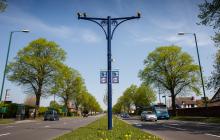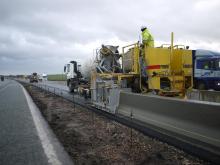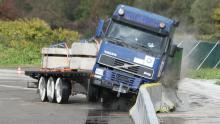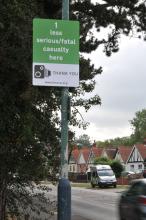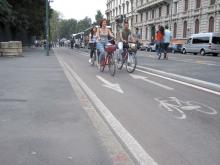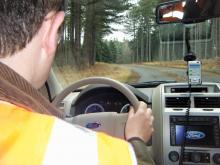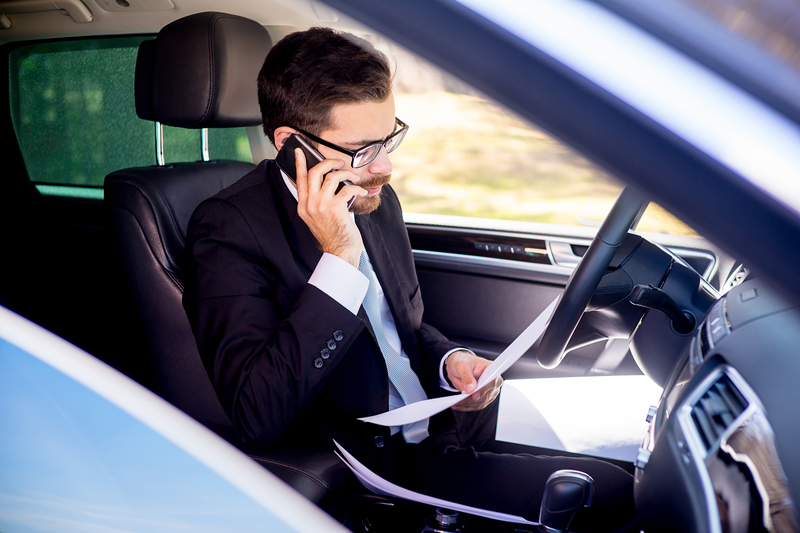
The way in which the world’s highways are designed, built and used needs to change fast as the gig economy becomes a global phenomenon. Millions of low-paid and badly-trained freelance drivers are now using road as their workplace, all of them working hard under huge amounts of pressure.
The trends behind all this are “very worrying”, says Heather Ward, an honorary senior research fellow at University College London (UCL). Speaking to delegates at the recent
Ward and her colleague Nicola Christie at the UCL
But first, what exactly is the gig economy? Ward defines it as “people who do not get paid a salary but get paid per gig … a piece-rate.” These workers, in fact, service providers, are linked to their customers, the service users, via an app. They are “often referred to as lifestyle workers because they can choose when they work to fit in with other commitments.” They are “self-employed and are not covered by employment law [and] have very few rights at work.” They manage their own working hours.
Ward’s research shows that 4.4% of the UK population has done some work in the gig economy in the past 12 months. That’s about 2.8 million people. A quarter of them live in London and they are generally young - 56% were 18-34 years old. The majority work in in transport services, such as parcel and food delivery.
Popular gig economy brands are uber, Deliveroo and Amazon Flex. It is a fast-growing world of freelance, freewheeling work. According to WhatIs.com, a data research site and tool, a study by Intuit, a software developer, predicted that by 2020, 40% of American workers would be independent contractors.
Ward is worried about what it all means for road safety. During her interviews it became obvious that the gig economy has a totally different perception of safety management and no real sense of responsibility for the workers involved. “Companies are only interested in the life of the parcel being delivered,” she told the conference. They are not concerned about “the person delivering it … even if the person has crashed. Virtually no training is given. No safety equipment is given. There is a total disregard of safety.”
Between two-thirds and three-quarters of the interviewees said that they had no safety training on managing risks on the road. Also, they are not given any safety equipment such as a high-visibility vest - 70% of workers provided their own - and that the company does not care about their safety while working. There seems to be, said Ward, no sense of shared responsibility.
Other problems arise. “Many parcel couriers work long hours and feel pressurised, as well as mentally and physically fatigued,” said Ward. “They are getting in and out of their cars or vans up to 90 times a day, often not knowing where they are going, operating the app at the wheel, scanning and checking parcels and having to take signatures. Many worked for multiple courier companies; with some worked three weeks of continuous 12-hour days without a break, especially at Christmas.”
One cyclist reported “falling asleep on her bike and subsequently crashing. One driver had to slap his face to keep awake … he would travel at only 80kph on the motorway to limit any damage if he fell asleep and crashed.”
They are also the classic distracted drivers. “Many of those on two wheels said they handled their phone while riding to accept jobs,” said Ward. “Many said that the app beeping at them to announce their next job was a distraction.” Indeed, 40% of those using an app found them to be distracting while driving or riding. Most play a noise at intervals to alert them to a job with a fixed time window in which to accept it. Also, 16% experienced severe fatigue, such as struggling to stay awake.
Many admitted to speeding, going through red lights to save time and parking illegally because of the pressure to deliver on time. “Most experience daily near misses and many had been involved in a collision. Many felt unsafe and had had their bike/moped stolen,” she said.
Ward approached some gig economy managers who said they “acknowledged the intense pressure that couriers were under and the risks they experienced.” They also felt that the drivers and riders had a poor rate of pay and that the companies they worked for disregarded their safety and wellbeing. Many of these managers “would like to“ improve the situation around the risks their couriers faced and their low pay … but they were conflicted about whose responsibility it was to ensure their safety on the roads.”
It is time for new enforcement rules, she concluded. “Distracted driving is a growing problem in road safety. Data on how many collisions involve distraction is poor but experts estimate that it plays a role in 10-30% of them. Studies also suggest that drivers using a mobile phone are approximately four times more likely to be involved in a collision than a driver not using a phone. There is a long list of distractions that undermine the driver’s or the rider’s ability to perform the driving task, but the use of mobile phones while driving appears to be widespread and growing.”
Sally Lines, chief executive of the Road Safety Trust – a UK grant-giving charity that funds safety projects called the report “very worrying reading and demonstrates that an enquiry into the gig economy and road safety is needed urgently”.
Delegates also heard that the TISPOL-backed ProjectEDWARD - a European day without a road death - was about to be recognised by the Prince Michael International Road Safety Awards. Every day, 70 people die on Europe’s roads. ProjectEDWARD has also been presented to the US National Highway Safety Committee to promote the concept in the US, where about 110 people die every day on their roads and to a recent Canadian Police Chiefs symposium.

